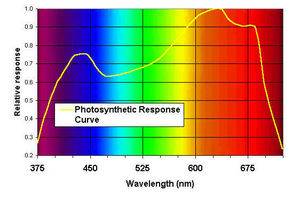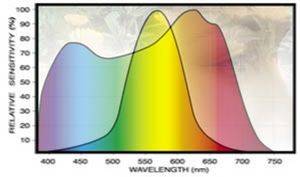My new grow is 15 plants topped once, lst'd and in 3 gallon grow bags. With lst and proper pruning I can very easily grow this many plants ina 4x4 area. I have a 430 watt son agro bulb going and a 270 watter. This gives me 700 watts in a 5x5 area lined with panda film, and the plants are in a 4x4 square in the middle. From what I read 700 watts is enough for a 4x4 area, had no problems my last two grows. This time I was thinking of adding two of my cfl clusters I made (extension cord spliced into lamp socket with bulb splitters) each one of these cfl clusters has seven 23 watt bulbs which is about 150 watts of cfl light. If I hang two of these in there, is it worth it? CFL light is not HID, I know it would help, but just wondering how much
-
Happy Birthday ICMag! Been 20 years since Gypsy Nirvana created the forum! We are celebrating with a 4/20 Giveaway and by launching a new Patreon tier called "420club". You can read more here.
-
Important notice: ICMag's T.O.U. has been updated. Please review it here. For your convenience, it is also available in the main forum menu, under 'Quick Links"!
You are using an out of date browser. It may not display this or other websites correctly.
You should upgrade or use an alternative browser.
You should upgrade or use an alternative browser.
How much do cfl's help in flower?
- Thread starter talos4
- Start date
J
JackKerouac
If you have HID, it's not worth the wasted watts.
They will help because CFL's produce more usable spectrum than HID...
Quazi
Member
As I understand it, the general rule of thumb for flowering is to shoot for 40-50w per sq/ft.talos4 said:My new grow is 15 plants topped once, lst'd and in 3 gallon grow bags. With lst and proper pruning I can very easily grow this many plants ina 4x4 area. I have a 430 watt son agro bulb going and a 270 watter. This gives me 700 watts in a 5x5 area lined with panda film, and the plants are in a 4x4 square in the middle. From what I read 700 watts is enough for a 4x4 area, had no problems my last two grows. This time I was thinking of adding two of my cfl clusters I made (extension cord spliced into lamp socket with bulb splitters) each one of these cfl clusters has seven 23 watt bulbs which is about 150 watts of cfl light. If I hang two of these in there, is it worth it? CFL light is not HID, I know it would help, but just wondering how much
Using that as guidance, you've got 700w for 25 sq ft. That's only 28w per square foot; far from optimal. You were suggesting putting 2 clusters of 150w worth of CFLs to the area? That would give you 1000w in a 25 square foot area which is 40w per square ft. 40w to 50w per square feet is where you want to be.
So: I'd say throw the CFLs in there if you can manage the heat of the 14 extra lamps. Your additional watts per square foot and wider spectrum sounds like it would be a good addition to your flowering environment.
Hope that helps!
-Q

Yes, but, lumens are worthless. Lumens measure the human eye's ability to see green. MJ is green because it rejects green. There are growers that use green lights in their gardens as nite lights, so they can see what they're doing during the dark cycle. Lumens measure the light that the plant doesn't see.talos4 said:But aren't lumens lumens?
Quazi
Member
Just to clarify: lumens are not a worthless rating.FreezerBoy said:Yes, but, lumens are worthless. Lumens measure the human eye's ability to see green. MJ is green because it rejects green. There are growers that use green lights in their gardens as nite lights, so they can see what they're doing during the dark cycle. Lumens measure the light that the plant doesn't see.
Lumens do not just measure the human ability to see a particular color.
Lumens do not just measure the light the plant does not see.
Lumens are used to measure the luminous flux of a light which is the what the human eye thinks the power of the light is. It has nothing to do with a particular color. Luminous flux is a conversion of the actual light energy which is being released from the lamp that has been adjusted to compensate for the human eyeball's reactions to certain wavelengths of light.
With all of that said, there is still some overlap between the photosynthetic response for plants and the human eye response for light.
The plants use light from 400-700 nm. It peaks its usage (particularly during flower) in the 630nm range. The human eye peaks in the 550nm range when it comes to light.
Because humans peak around the 550nm range,one can understand why lights with higher amounts within that frequency have considerably more lumens. Here's an HPS spectrum:

As you can see, there is a spike in the yellow to red range. That is why HPS lights have higher lumen ratings because our eyes are trained to that range. However, plants also react to lights at this level. You can see the black curved line above the graph in that picture. That is the photosynthetic sensitivity curve. As you can see, there's a great deal of light that we are seeing (perceiving) that is also possibly good light for plants.
So to say that lumens are useless is not entirely correct. While lumens are not ideal for measuring the amount of energy being absorbed by the plant (as they do not directly measure the radiation energy that the plant is using), it does not mean that it is an entirely useless measure.
I hope that was understandable.
I think you are a bit confused with the math here. You stated that you started with 700w in a 5x5 area lined with panda. Even if your plants are in a 1 ft square in the center of your room, you still want to use the total amount of space that the light is covering. That means you want to use 25 square feet for your calculations. That's around 1000 / 25 square feet which is around 40 watts per square foot.talos4 said:Well, I added fourteen 23 watt cfl's for a total of about 1000 watts. Plants are grouped together in area of 4x4 feet. Heat is no problem, so I'm glad I did it. That gives me around 62 watts per square foot
Anything above 50 watts per square foot and you'll start to hit diminishing returns.
Good luck with the CFL additions. Hope everything goes well for you!
-Q

Last edited:
Quazi
Member
Freezerboy, I'm sorry to leave your door open, but I think the graph you are using is not accurate.
Here's why:
The first reason: you have no numbers along the left hand side. Response, or sensitivity, to light is (usually) measured on a scale from 0, to 100%. If you want to place multiple graphs on top of each other, each of them should be on the same scale of 0 to 100%.
The second reason: the light that originates from the spectrum around 400-700nm is considered photosynthetically active radiation (PAR) because it is within the photosynthetic response range. I'm not sure where you got the information for your graph, but the photosynthetic response range is much different in all of the other sources that I have looked at. In addition, the range is well known to peak in the 650nm area which your graph hardly represents.
Here's what I've understood the photosynthetic response curve to look like:

Because you have no numbers along the left, and you are using incorrect graphs, you cannot see the overlap. When you overlay the photosynthetic response range with the human response range (with accurate graphs that are to scale), then you can get a better idea.
Here's another source with a similar graph for the photosynthetic response curve:

Here's a graph of the human eye response that is to scale (at least this is a similar shape on your graph):

Now that we have two graphs that are a bit more accurate and that are both on the same scale, let's combine them:

We can see that plants peak from 400 to 700 nm. The human eye matches response intensity at around the 540nm range which is towards the side of the peak for plants (620-50nm).
You can see that, in fact, human response to the spectrum and the relative photosynthentic response that plants have to the spectrum, definitely overlap.
Again, I agree that lumens and human vision are not the best measurements for determining how many photons the plant is actually absorbing. However, I cannot agree that it is not useful information.
And, for what it's worth: halogen lights are not bad for growing because of their spectrum. Halogens are bad for growing because of their terrible efficiency and heat.
Also, FreezerBoy, don't get me wrong. I have much for you and love your grow. I just wanted to be sure that you were giving out accurate information
for you and love your grow. I just wanted to be sure that you were giving out accurate information 
-Q
Here's why:
The first reason: you have no numbers along the left hand side. Response, or sensitivity, to light is (usually) measured on a scale from 0, to 100%. If you want to place multiple graphs on top of each other, each of them should be on the same scale of 0 to 100%.
The second reason: the light that originates from the spectrum around 400-700nm is considered photosynthetically active radiation (PAR) because it is within the photosynthetic response range. I'm not sure where you got the information for your graph, but the photosynthetic response range is much different in all of the other sources that I have looked at. In addition, the range is well known to peak in the 650nm area which your graph hardly represents.
Here's what I've understood the photosynthetic response curve to look like:

Because you have no numbers along the left, and you are using incorrect graphs, you cannot see the overlap. When you overlay the photosynthetic response range with the human response range (with accurate graphs that are to scale), then you can get a better idea.
Here's another source with a similar graph for the photosynthetic response curve:

Here's a graph of the human eye response that is to scale (at least this is a similar shape on your graph):

Now that we have two graphs that are a bit more accurate and that are both on the same scale, let's combine them:

We can see that plants peak from 400 to 700 nm. The human eye matches response intensity at around the 540nm range which is towards the side of the peak for plants (620-50nm).
You can see that, in fact, human response to the spectrum and the relative photosynthentic response that plants have to the spectrum, definitely overlap.
Again, I agree that lumens and human vision are not the best measurements for determining how many photons the plant is actually absorbing. However, I cannot agree that it is not useful information.
And, for what it's worth: halogen lights are not bad for growing because of their spectrum. Halogens are bad for growing because of their terrible efficiency and heat.
Also, FreezerBoy, don't get me wrong. I have much
 for you and love your grow. I just wanted to be sure that you were giving out accurate information
for you and love your grow. I just wanted to be sure that you were giving out accurate information -Q

Last edited:



